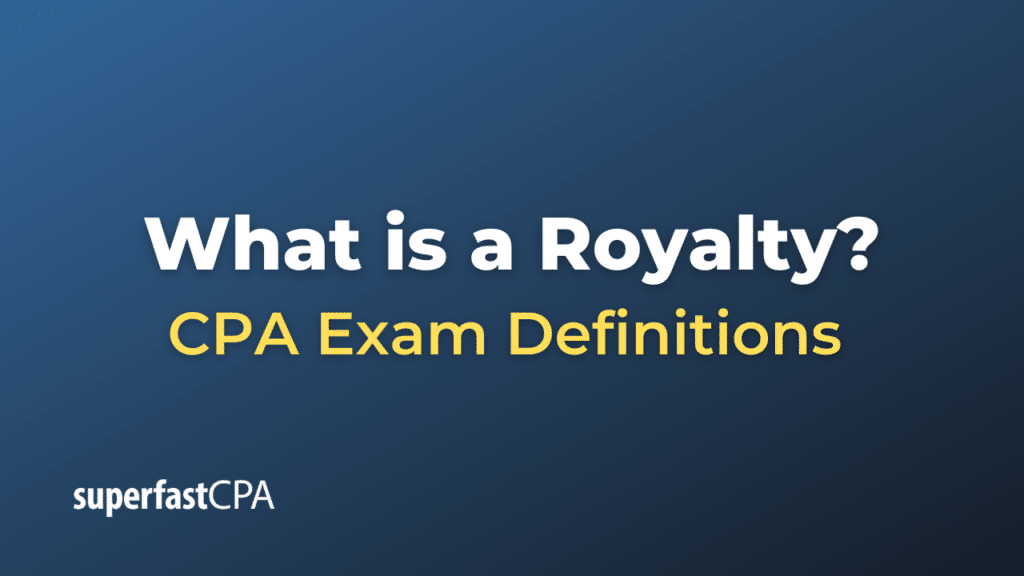Royalty
A royalty is a payment made by one party (the “licensee”) to another party (the “licensor” or “owner”) for the right to use a specific asset. Typically, the asset in question is intellectual property (IP), such as patents, copyrights, trademarks, or know-how. Royalties can also be paid for the use of natural resources like minerals, oil, and gas.
The amount paid as a royalty is usually calculated based on a percentage of the revenue earned using the asset or a fixed amount per unit sold. The specific terms, including the royalty rate and payment frequency, are usually outlined in a licensing agreement.
Here are some common types of royalties:
- Copyright Royalties : Paid for copyrighted material like books, music, films, and software. For instance, an author might receive a royalty for each copy of their book that’s sold.
- Patent Royalties: Paid for the use of patented technology. For instance, a company that produces a product using someone else’s patented method would pay royalties to the patent holder.
- Trademark Royalties: Paid for using a trademarked brand name or logo. For example, franchisees often pay royalties to franchisors for the right to operate under the franchise’s name.
- Resource Royalties: Paid for the right to extract natural resources, such as minerals, timber, or oil and gas, from the land.
- Performance Royalties: Paid when copyrighted music or performances are played publicly, such as on the radio, in concert venues, or in TV and film.
- Franchise Royalties: Paid by franchisees to franchisors for the rights to operate a branch of the business.
Royalties provide a way for creators, inventors, and resource owners to monetize their assets and earn revenue over a more extended period, often well beyond the initial sale or license of the asset.
Example of a Royalty
Let’s delve into an example involving copyright royalties in the music industry.
Sarah is a talented musician who writes and records a song titled “Melody of Dreams.” She copyrights her song to protect her intellectual property. A popular record label, DreamTunes Records, takes an interest in Sarah’s song and wants to distribute and sell it.
Licensing Agreement:
Sarah and DreamTunes Records enter into a licensing agreement. The terms state that for every copy of “Melody of Dreams” sold, Sarah will receive a royalty of $0.50. This means whether the song is sold as a digital download, a CD, or even played on certain streaming platforms that pay per play, Sarah gets her royalty.
Sales:
Over the course of a year, “Melody of Dreams” becomes a hit. DreamTunes Records reports that they sold 200,000 copies of the song.
Royalty Calculation:
200,000 copies × $0.50/royalty per copy = $100,000
Sarah earns $100,000 in royalties from the sales of her song over that year.
Additional Opportunities:
Later, a movie producer approaches Sarah to use “Melody of Dreams” in a film. They negotiate a one-time royalty payment of $10,000 for the right to feature the song in the movie.
Total Earnings for Sarah:
$100,000 (from song sales) + $10,000 (from movie feature) = $110,000
This example demonstrates how a musician can earn money from their creation through various channels. The royalties provide Sarah with continuous revenue based on the song’s performance in the market and its utilization in different mediums. It also emphasizes the importance of protecting one’s intellectual property to capitalize on such opportunities.













